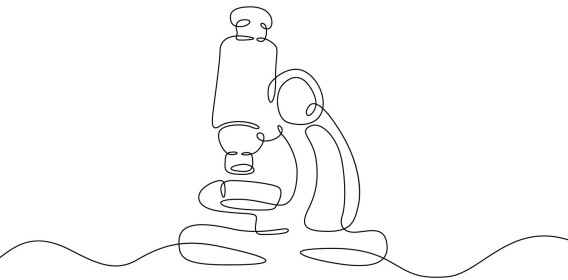
This stone tablet with the Ten Commandments has an extra commandment you've probably never heard of
Soon, the oldest known stone tablet with the Ten Commandments will be auctioned off. What does this early version contain?

'You shall have no other gods before me.'
This is the first of the commandments in Judaism and Christianity, believed to have come directly from God, according to the Great Norwegian Encyclopedia.
Moses is said to have received the tablets atop Mount Sinai during the Israelites' journey through the desert.
The oldest known stone tablet with a version of the Ten Commandments is set to be sold at Sotheby's auction house in New York in December. This version of the commandments originates from the Samaritans, a branch of early Judaism.
The oldest known commandments
"The stone tablet is interesting because it shows how influential the Samaritans were in Judea around this time," Torleif Elgvin tells sciencenorway.no.
He is a professor emeritus of theology at NLA University College.
The modest stone weighs a little over 50 kilograms and stands 63 centimetres tall. It may date from between the 4th and 8th centuries CE. The stone is from Yavne, south of Tel Aviv in present-day Israel.
The original Ten Commandments are much older. According to Elgvin, Moses' lifetime is often dated to 1200 BCE. In biblical texts, researchers find clear traces of the commandments dating back to the 700s BCE, Elgvin says.
According to Encyclopedia Britannica, they may perhaps be dated to between 1200 and 1500 BCE.
The auction house calls the tablet the oldest known commandments on a stone tablet.
Supposedly used as a threshold
The stone tablet was unknown for many years. It is said to have been found in 1913 during railway construction.
Afterwards, it was reportedly used as a threshold in a backyard in Yavne.
The inscription is said to have been facing up, so people walked over the letters. It is written in ancient Hebrew script.
The inscription was discovered by archaeologist Jacob Kaplan in Tel Aviv in the 1940s when he purchased the stone, according to the auction house.
A missing commandment
The commandments on the stone tablet are not clearly numbered. They are structured differently than what we are used to.
Sotheby's English translation of the commandments can be seen below.
In Judaism, the Ten Commandments also include a prohibition against making graven images, according to the Great Norwegian Encyclopedia. This prohibition is included in this version, which belongs to the Samaritan branch of early Judaism.
However, this tablet lacks one commandment: the prohibition against misusing the name of God.
Torleif Elgvin believes that the omission of this commandment on this specific stone tablet is either a coincidence or an oversight. Othwise, the Ten Commandments in Judaism and among the Samaritans are known to be identical. This is evident in the Samaritan version of the Book of Exodus, where the Ten Commandments are listed.
Apart for one additional commandment unique to the Samaritans, which is included on the stone tablet set to be sold.
A commandment to build a temple
The extra commandment concerns building a temple on Mount Gerizim in Samaria. This commandment is also known from other sources besides this stone tablet.
A temple complex was constructed on Mount Gerizim around 450 BCE, according to the researcher.
"The group based around Mount Gerizim eventually developed into the Samaritans. Samaritans were historically a branch of early Judaism and are ethnically Israelites. They share the Torah with the Jews but not the rest of the Hebrew Bible," explains Elgvin.

Elgvin explains that the Samaritans were in competition with the Judeans, who had their Jewish temple on the Temple Mount in Jerusalem.
The Temple Mount is considered extremely sacred in Islam, Christianity, and Judaism. According to the Bible, the Ark of the Covenant and the original Ten Commandments were kept in the temple.
However, on Mount Gerizim, there stood a rival temple, which was a very holy site for the Samaritans.

The Good Samaritan
This temple is said to have been destroyed by the Jewish prince John Hyrcanus when he conquered Samaria in 112 BCE, according to the Great Norwegian Encyclopedia.
"From that point on, the relationship between Jews and Samaritans became bitter and strained," says Elgvin.
This tension is also part of the context for the parable of the Good Samaritan, which Jesus tells. In the story, a Samaritan helps a stranded Jew, while two other Jews pass by without assisting. The parable can be read on Bible Gateway.
"It was radical that Jesus used a Samaritan in the parable," says Elgvin.
How many Samaritans were there?
The Samaritan population was likely large, according to Elgvin. It is estimated that they numbered several hundred thousand people when this stone tablet was created.
Today, their numbers are much smaller, but the Samaritans remain an ethnic group living in cities such as Holon in Israel and Nablus in the West Bank. They continue to regard Mount Gerizim as holy.
Elgvin mentions that he has participated in their Passover celebrations held on this mountain. They still sacfirice their Passover lamb here, he says.
The ancient stone tablet is to be auctioned on December 18. The auction house estimates its value to be between one and two million dollars.
———
Translated by Alette Bjordal Gjellesvik
Read the Norwegian version of this article on forskning.no
Related content:

Subscribe to our newsletter
The latest news from Science Norway, sent twice a week and completely free.






































